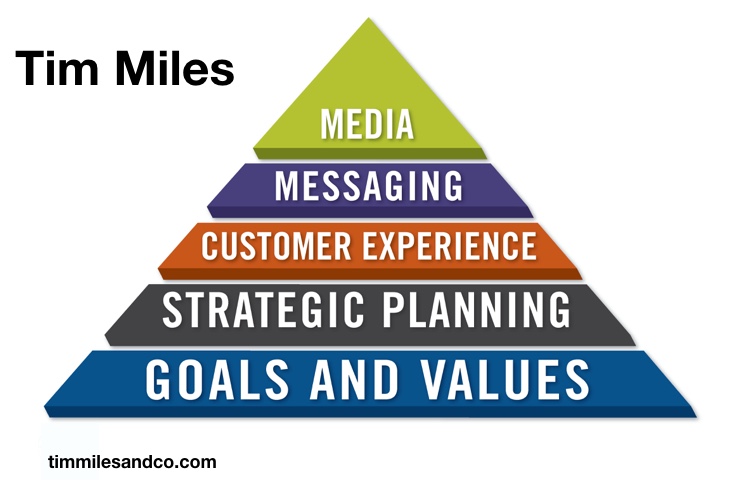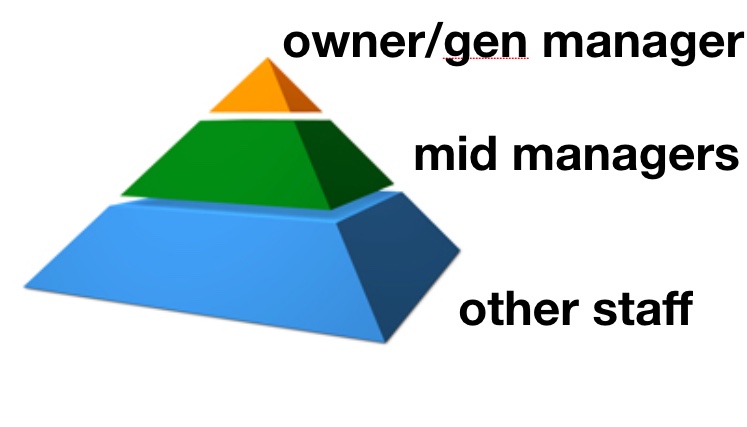Gatekeeper or Team Builder - Part 1
by Danny Summers
In my position I get to observe a number of patterns in business management. And doing so, you see the real differences in how owners approach their business. There are some trends I want to highlight here and challenge you to assess where you are in your business management style. First, let's discuss two distinct types of owners or managers I see at work today.
The Gatekeeper
The Gatekeeper manages by receiving all or most outside information and decide who in the organization needs to know what. Who to distribute the information to, who needs to know, on a limited basis. In my mind, the ultimate gatekeeper was this guy. When Dorothy and her unusual "team" approached the Emerald City gate at Oz, they were stopped by the Wizard. At that point, to get into the city, they had to get past The Wizard of Oz. This is a fitting comparison to what see in some businesses today.
At the same time I hear numerous owners and managers saying these types of comments:

I found this graphic that depicts what this person's "To-Do" list looks like. It is EVERYTHING! They have developed their business over time and they are carrying the bulk of the responsibility. This style of management is not sustainable and can have a negative effect on the owner/manager, their health, and the ability to maximize a business' full potential and put a real damper on creating a fun place to work - for everyone. If you find yourself in this position in your business, it is time to make a change. I know you are ready!
There really is only one real answer for the owner/manager in this situation.
The Leader or Team-Builder
In contrast, the other option is to be a Leader or Team-Builder. This approach or style to management turns from being an issue-approach to a people-central vision. It begins to break out responsibilities to individual team members. It encourages individual team member growth and development. It makes individuals feel more responsible and their job can be more satisfying.
Two examples of Team-Building right here within The Group are B.B. Barns and Buchanan's Native Plants. Let's explore's some details shared by both and how they have developed their people... took stress off the owners and managers and grew their businesses.

B.B. Barns' Barney Bryant said: "Our transition from a top-down style of management to a more Team approach began in 2011. First, the owners had to turn loose. We decided our biggest asset was our people and we began to help our people develop. We developed responsibilities so each team member is accountable (with rewards). We found that when our people are happy, we have happy customers!"

Buchanan's Native Plants' General Manager, Kevin Berry said, "Our transition began in 2013. Founder, Donna Buchanan wanted to retire. Her son and daughter in law, Zack and Heather Buchanan, we ready to take the challenge, and they decided to hire a general manager (me). A primary decision was made to spread out the responsibility more. Zack, Heather, and I all take a different area of responsibility, based on what we are best at. And we have continued that approach with other staff. Prior to 2016 we have a lot of the buying responsibility on one or two people. So, we decided to spread that responsibility out. One example is where we have 1 person buying Tree, Shrubs and Perennials. Now, we have one person focused on Perennials, but all about Perennials. They buy, they are responsible for merchandising, and sales training. Results YTD in 2017 are showing this is the right decision, with Perennials sales up 40%! We also are getting together more as a team. Every morning we have a 5 minute "circle meeting" and every Saturday we have a 15 minute meeting."
Top-Down or Bottom-Up?
The old approach to management has been a "Top-Down" one. You heard this in Barney Bryant's comments earlier. The graphic here showing a pyramid is a quick reminder of this long-time practice.

Tim Miles, who we have had with us at two Fall Events, shares his vision for a "Bottom-Up" approach to management. It shows just the opposite and at the base or bottom is the goals and values of the company. This is the basic belief your company is grounded in.
This bottom-up approach can also be applied to people. Owners/Managers at the bottom. Next level up is mid-level managers, and then front line staff above that. At the top is your customer.
When you realize your front line staff is the ones who your customers see the most, you soon realize Barney Bryant's comment, "when our people are happy, we have happy customers!" makes the most sense.
To Be Continued
In Part 2, we will read (and hear and see) some important points on this subject from our own John Kennedy and also explore possible challenges ahead attracting the right staff and some really unique ways to do so.
Stay tuned!
Danny


